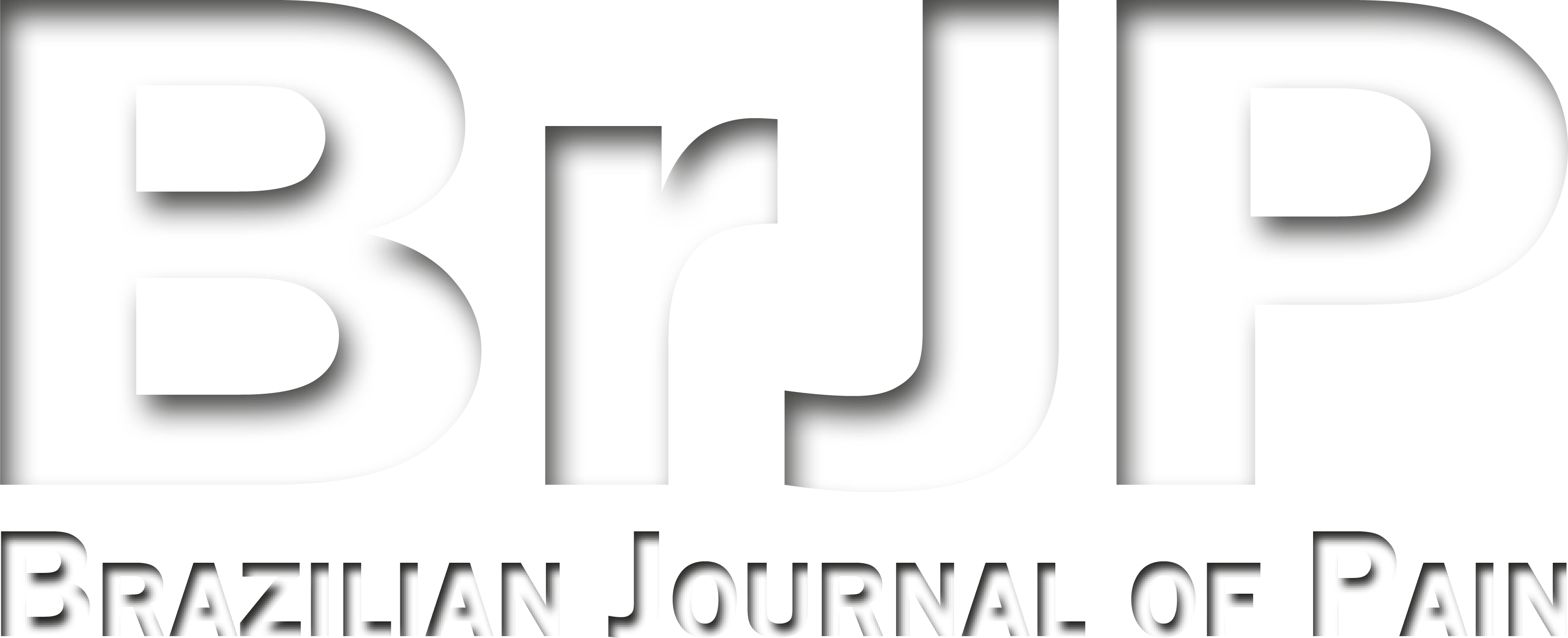Impact of educational strategies on pain control quality indicators at a tertiary hospital
Impacto de estratégias educativas nos indicadores de qualidade do controle de dor em um hospital de alta complexidade
Leopoldo Muniz da Silva; Erica Cristina de Paula; Saullo Queiroz Silveira; Arthur de Campos Vieira Abib; Wilson Porfírio de Medeiros Nunes; Helena Harumi Sasaki
Abstract
Keywords
Resumo
Palavras-chave
References
Dyson J, Lawton R, Jackson C, Cheater F. Development of a theory-based instrument to identify barriers and levers to best hand hygiene practice among healthcare practitioners. Implement Sci. 2013;8:111.
Davidoff F, Dixon-Woods M, Leviton L, Michie S. Demystifying theory and its use in improvement. BMJ Qual Saf. 2015;24(3):228-38.
Hadi MA, Alldred DP, Briggs M, Marczewski K, Closs SJ. Treated as a number, not treated as a person: a qualitative exploration of the perceived barriers to effective pain management of patients with chronic pain. BMJ Open. 2017;7(6).
Nasser SC, Nassif JG, Saad AH. Physicians' attitudes to clinical pain management and education: survey from a Middle Eastern Country. Pain Res Manag. 2016;2016.
Dixon-Woods M, Leslie M, Tarrant C, Bion J. Explaining Matching Michigan: an ethnographic study of a patient safety program. Implement Sci. 2013;8:70.
Berwick DM. The science of improvement. JAMA. 2008;299(10):1182-4.
Evidence scan: Improvement Science. 2011.
Barbosa FF. Estilos de Ensino e Aprendizagem. Rev Escola de Engenharia, UFRS. 1999;85(1):1-7.
Souza MBB, Zem-Mascarenhas SH, Rocha ESB. Percepção dos alunos de graduação sobre a disciplina de administração aplicada à enfermagem. REME - Rev Min Enf. 2005;9(2):140-6.
Allipradini PMZ, Schiavoni A, Mello DE, Sekitani JT. Estratégias de aprendizagem utilizadas por estudantes na educação a distância: implicações educacionais. Psicol Educ. 2014;38:5-16.
Padalino Y, Peres HHC. E-learning: a comparative study for knowledge apprehension among nurses. Rev Lat Am Enfermagem. 2007;15(3):397-403.
Rouleau G, Gagnon MP, Côté J, Payne-Gagnon J, Hudson E, Dubois CA. Effects of E-learning in a continuing education context on nursing care: systematic review of systematic qualitative, quantitative, and mixed-studies reviews. J Med Internet Res. 2019;21(10).
Song W, Eaton LH, Gordon DB, Hoyle C, Doorenbos AZ. Evaluation of evidence-based nursing pain management practice. Pain Manag Nurs. 2015;16(4):456-63.
Alzghoul BI, Abdullah NA. Pain management practices by nurses: an application of the knowledge, attitude, and practices (KAP) model. Glob J Health Sci. 2015;8(6):154-60.
Silva JS, Cruz TA, Ribeiro CJ, Santos VS, Alves JA, Ribeiro MC. Pain in patients attended at risk classification of an emergency service. Rev Dor. 2016;17(1):34-8.
Viveiros WL, Okuno MFP, Campanharo CRV, Lopes MCBT, Oliveira GN, Batista REA. Pain in emergency units: correlation with risk classification categories. Rev Lat Am Enfermagem. 2018;26.
Eshete MT, Baeumler PI, Siebeck M, Tesfaye M, Wonde D, Haileamlak A. The views of patients, healthcare professionals and hospital officials on barriers to and facilitators of quality pain management in Ethiopian hospitals: a qualitative study. PLoS One. 2019;14(3).
Faccioli SC, Tacla MT, Rosseto EG, Collet N. The management of pediatric pain and the perception of the nursing team in light of the social communication model of pain. BrJP. 2020;3(1):37-41.
Hong X, Hui L, Jin L, Yunxia Z, Li L, Hong Z. Pain prevalence and pain management in a Chinese hospital. Med Sci Monit. 2018;24:7809-19.
Van Gulik L, Ahlers SJGM, Bruins P, Tibboel D, van Dijk Knibbe M. Adherence to all steps of a pain management protocol in intensive care patients after cardiac surgery is hard to achieve. Pain Res Manag. 2017;2017.
Submitted date:
06/03/2020
Accepted date:
08/17/2020


